目录
cmp_to_key
在Python中,cmp_to_key 是一个函数,它将一个比较函数转换成一个键函数,使得比较函数可以用作排序算法的键。这个函数在Python 3中通过functools模块提供。
比较函数
在Python中,比较函数是一个接受两个参数并返回以下三种值之一的函数:
- 负数:表示第一个参数小于第二个参数。
- 零:表示两个参数相等。
- 正数:表示第一个参数大于第二个参数。
键函数
键函数是一个接受一个元素并返回一个值的函数,这个返回的值将被用作排序的依据。在Python的sort()方法或sorted()函数中,可以提供一个键函数来决定排序的方式。
cmp_to_key 的作用
由于Python的sort()方法和sorted()函数需要键函数返回的是具体的比较结果(-1、0、1),而不是比较函数的返回值(负数、零、正数),因此cmp_to_key的作用就是将比较函数转换成一个符合要求的键函数。
使用 cmp_to_key
以下是如何使用cmp_to_key的一个例子:
python
from functools import cmp_to_key
def compare_strings(a, b):
# 比较两个字符串
return (a > b) - (a < b)
# 使用cmp_to_key将比较函数转换成键函数
sorted_strings = sorted(["banana", "apple", "cherry"], key=cmp_to_key(compare_strings))
print(sorted_strings)在这个例子中:
- compare_strings 是一个比较函数,它比较两个字符串a和b。
- cmp_to_key(compare_strings) 将compare_strings转换成一个键函数,这个键函数可以用作sorted()函数的键。
代码解释
- compare_strings 函数返回1、0或-1,这与Python比较操作符的返回值一致。
- cmp_to_key(compare_strings) 将compare_strings转换为一个键函数。
- sorted() 函数使用这个键函数对字符串列表进行排序。
力扣452 ---射气球
有一些球形气球贴在一堵用 XY 平面表示的墙面上。墙面上的气球记录在整数数组 points ,其中points[i] = [xstart, xend] 表示水平直径在 xstart 和 xend之间的气球。你不知道气球的确切 y 坐标。
一支弓箭可以沿着 x 轴从不同点 完全垂直 地射出。在坐标 x 处射出一支箭,若有一个气球的直径的开始和结束坐标为 xstart,xend, 且满足 xstart ≤ x ≤ xend,则该气球会被 引爆 。可以射出的弓箭的数量 没有限制 。 弓箭一旦被射出之后,可以无限地前进。
给你一个数组 points ,返回引爆所有气球所必须射出的 最小 弓箭数 。
示例 1:
输入:points = [[10,16],[2,8],[1,6],[7,12]] 输出:2 解释:气球可以用2支箭来爆破: -在x = 6处射出箭,击破气球[2,8]和[1,6]。 -在x = 11处发射箭,击破气球[10,16]和[7,12]。示例 2:
输入:points = [[1,2],[3,4],[5,6],[7,8]] 输出:4 解释:每个气球需要射出一支箭,总共需要4支箭。示例 3:
输入:points = [[1,2],[2,3],[3,4],[4,5]] 输出:2 解释:气球可以用2支箭来爆破: - 在x = 2处发射箭,击破气球[1,2]和[2,3]。 - 在x = 4处射出箭,击破气球[3,4]和[4,5]。提示:
- 1 <= points.length <= 105
- points[i].length == 2
- -231 <= xstart < xend <= 231 - 1
题目
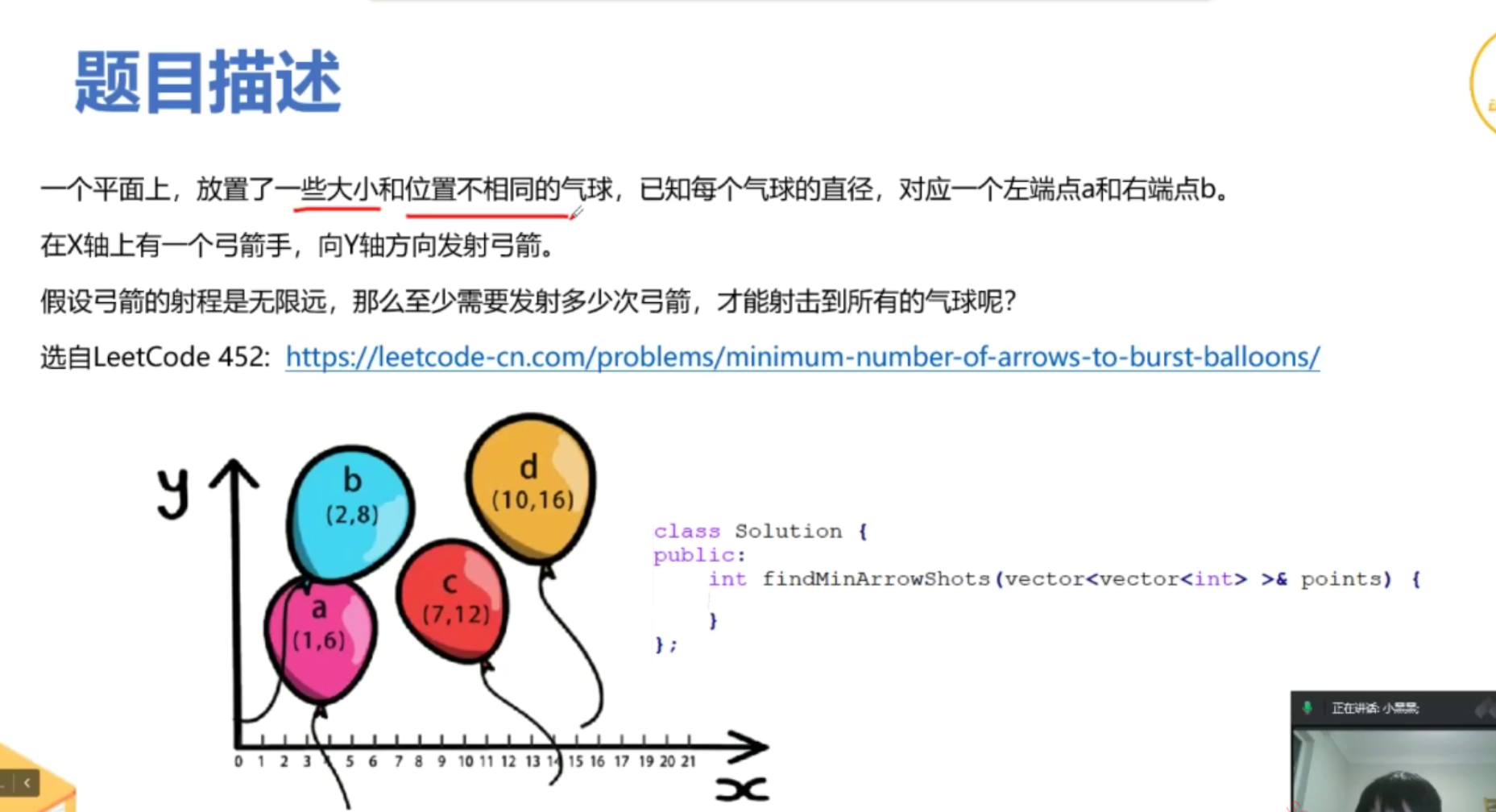
分析
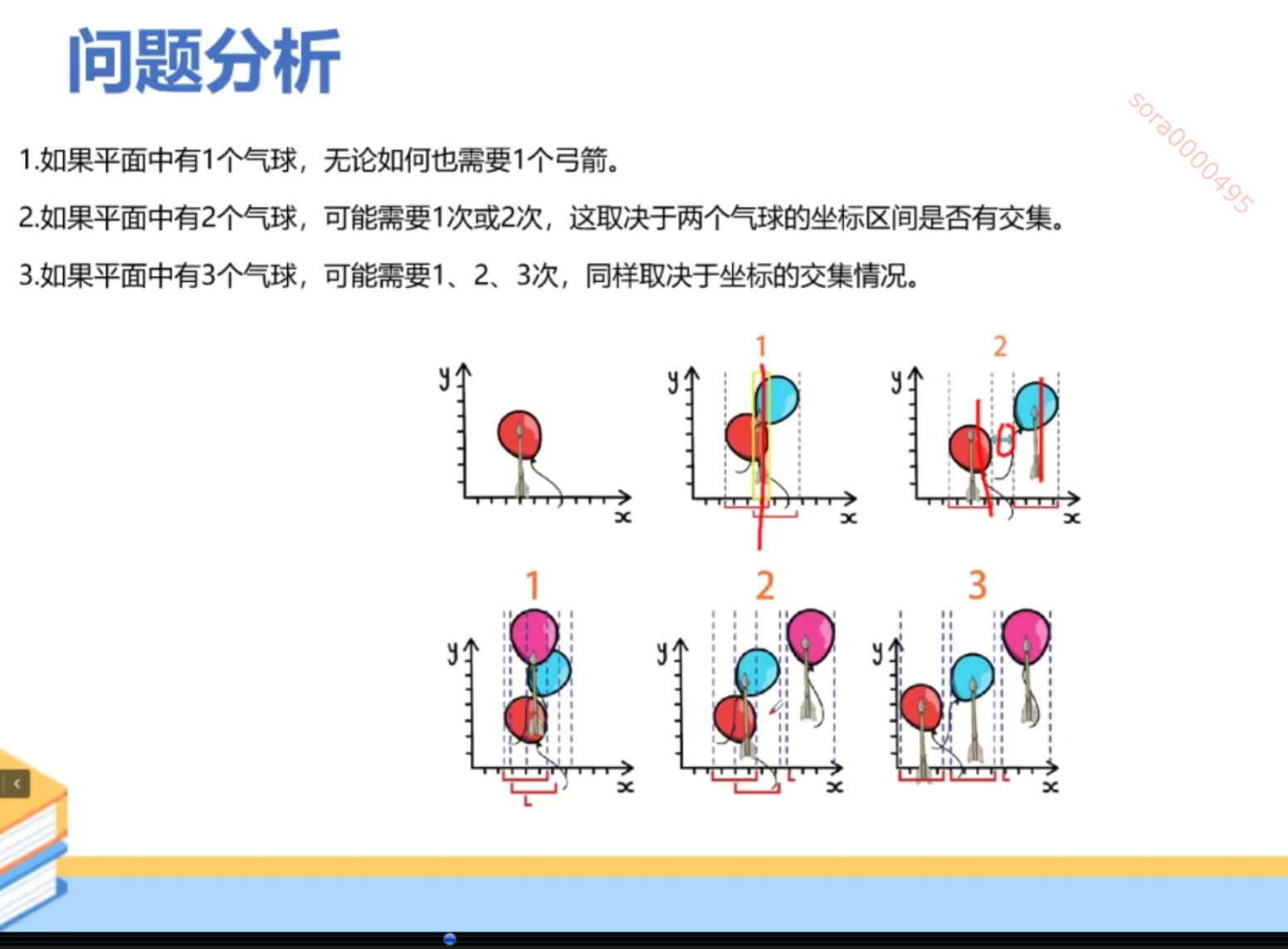
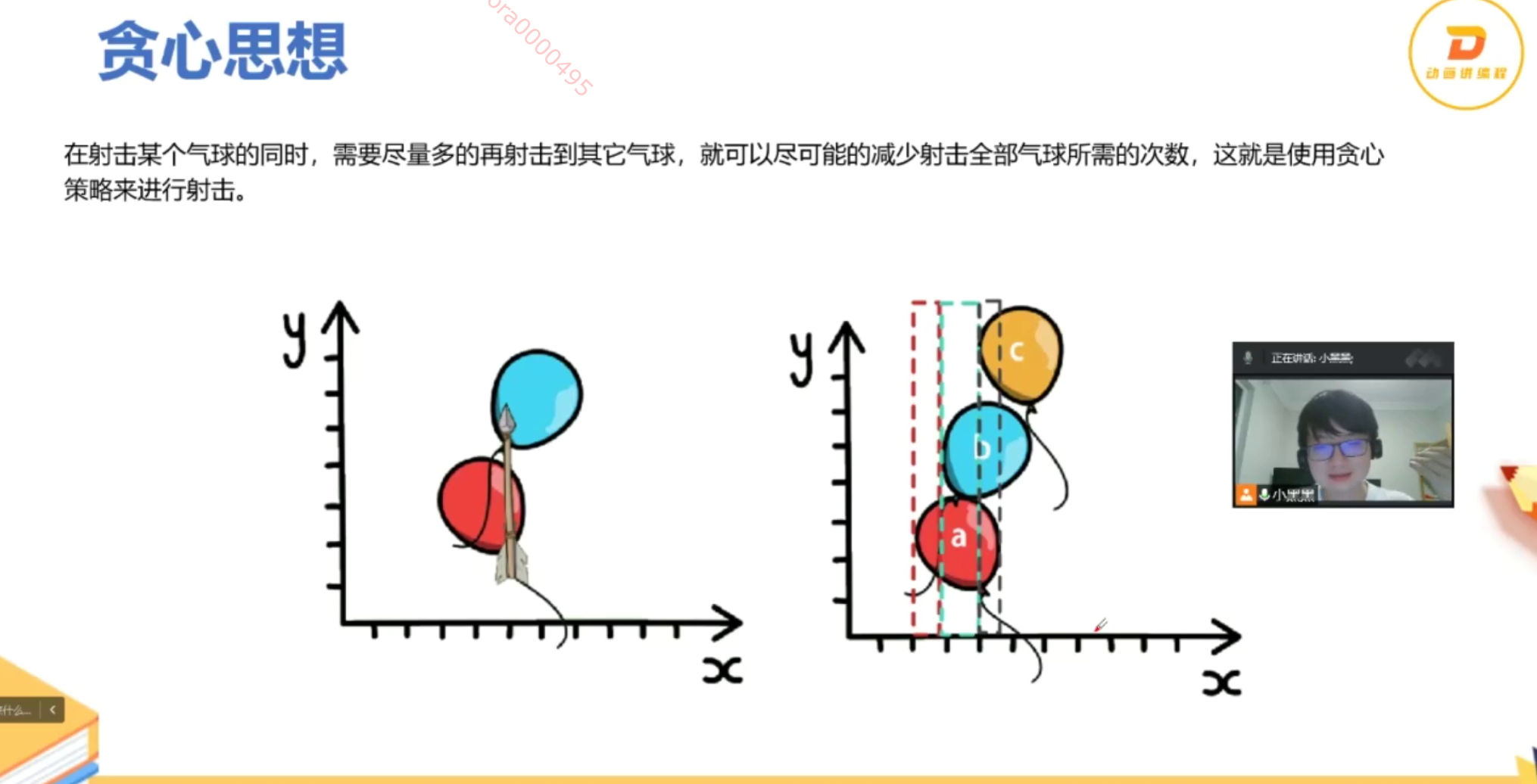
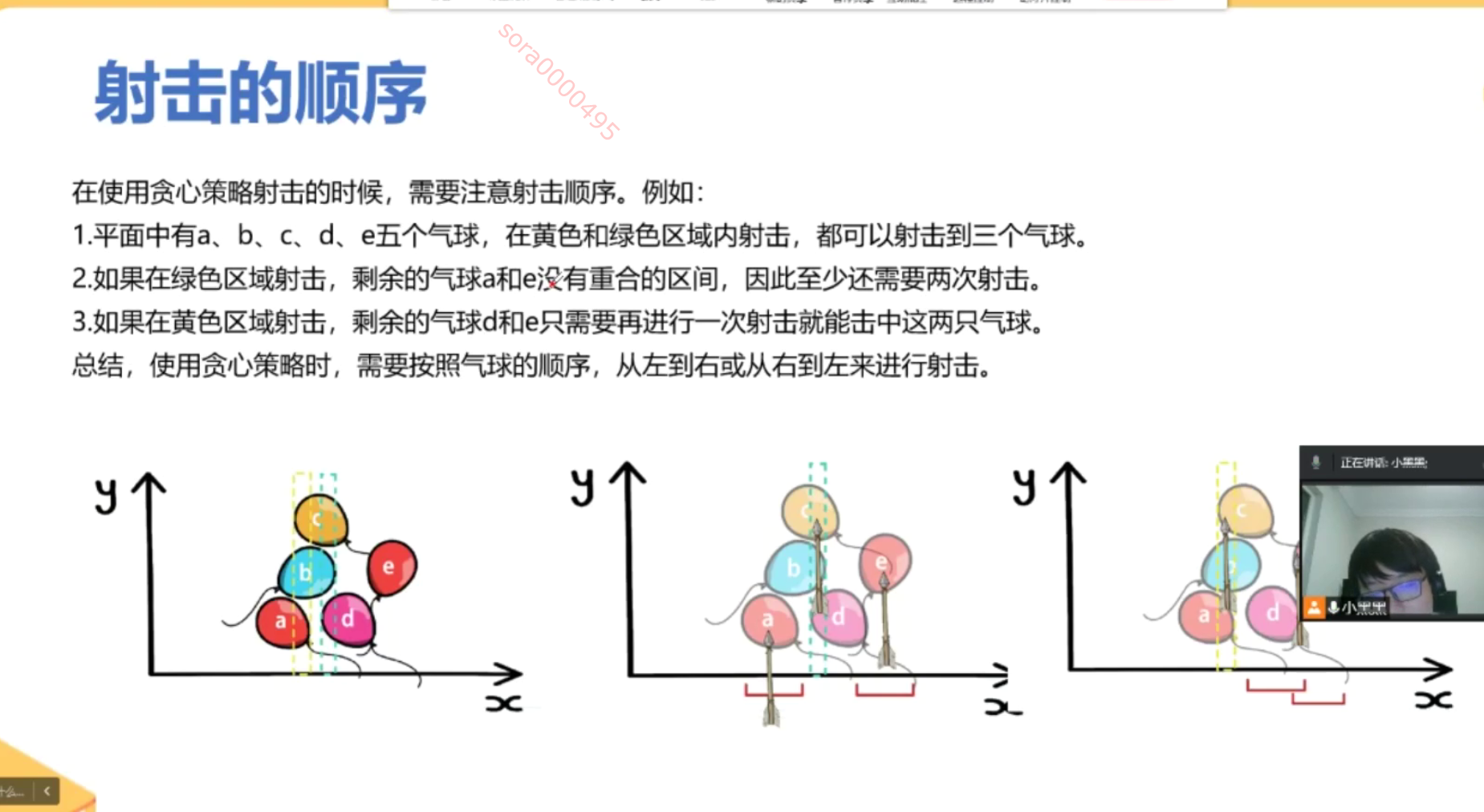
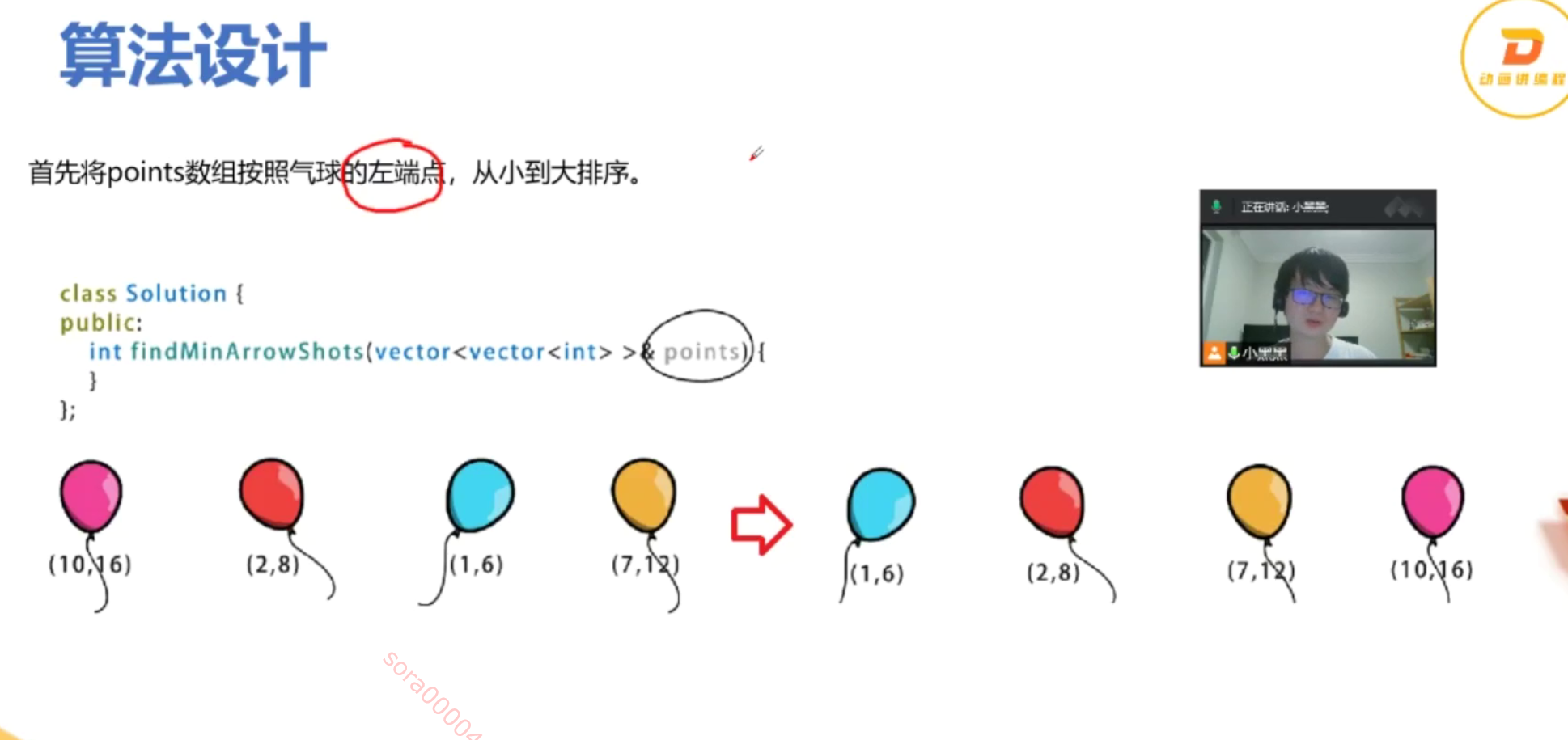
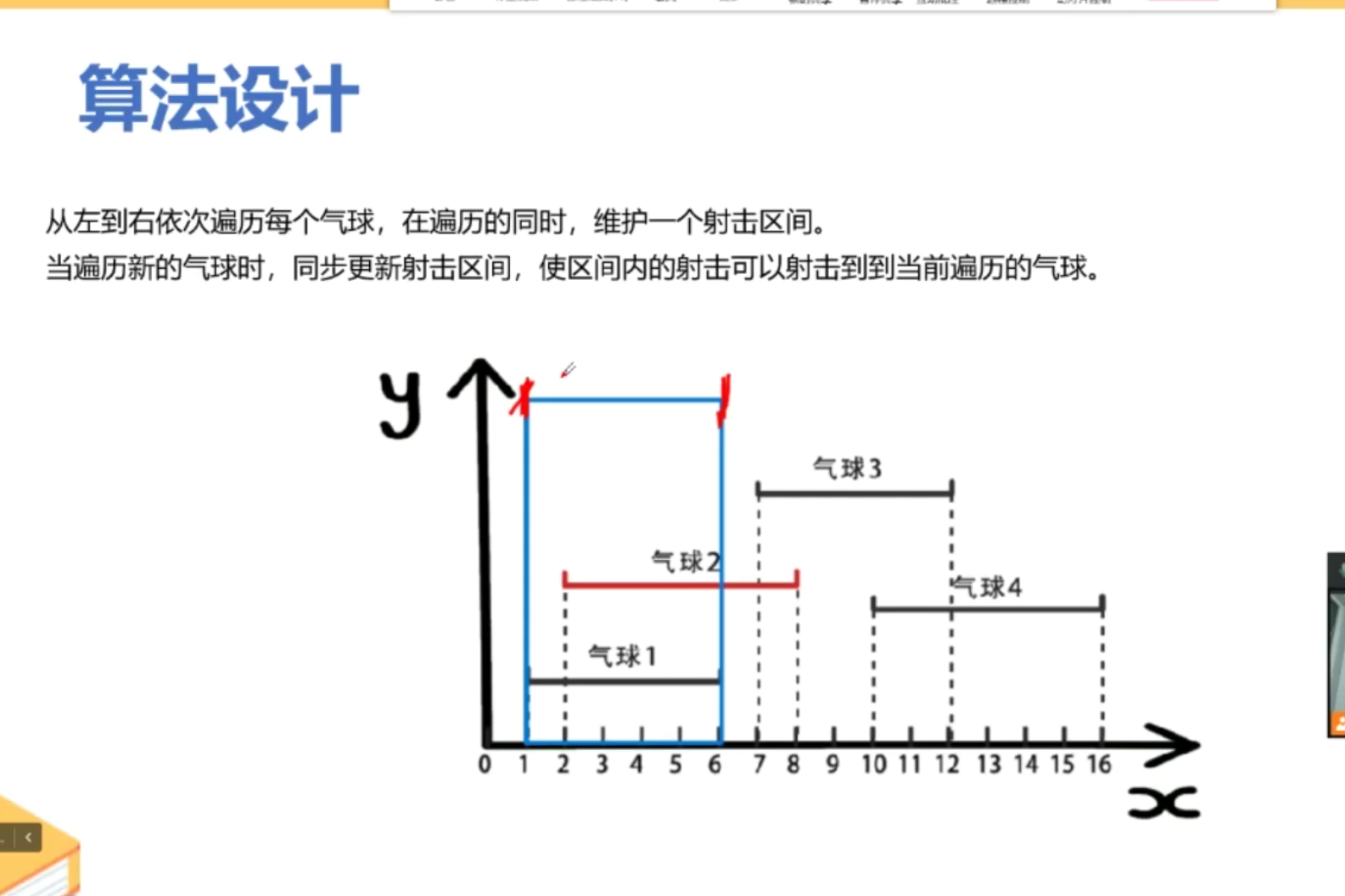
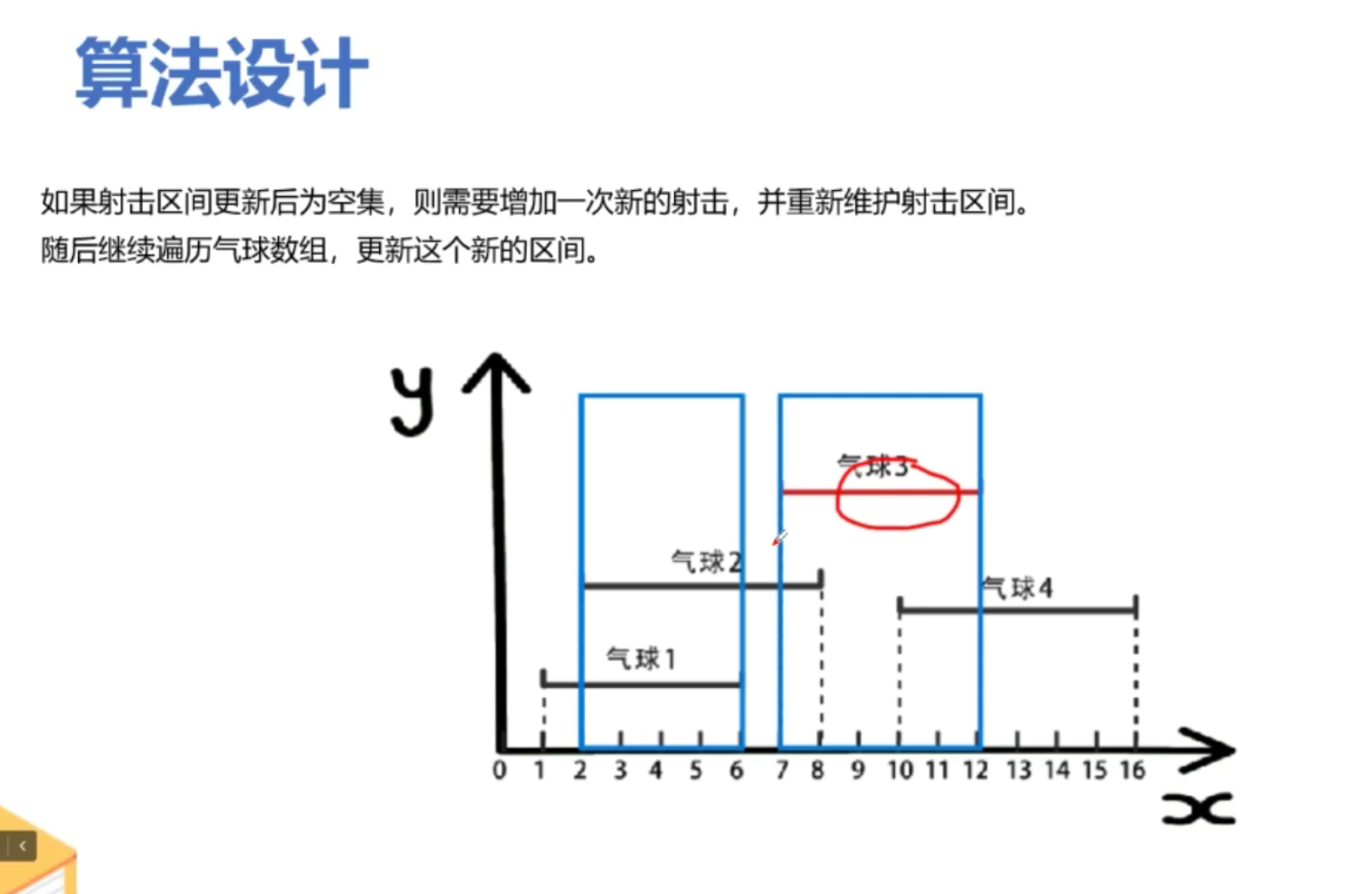
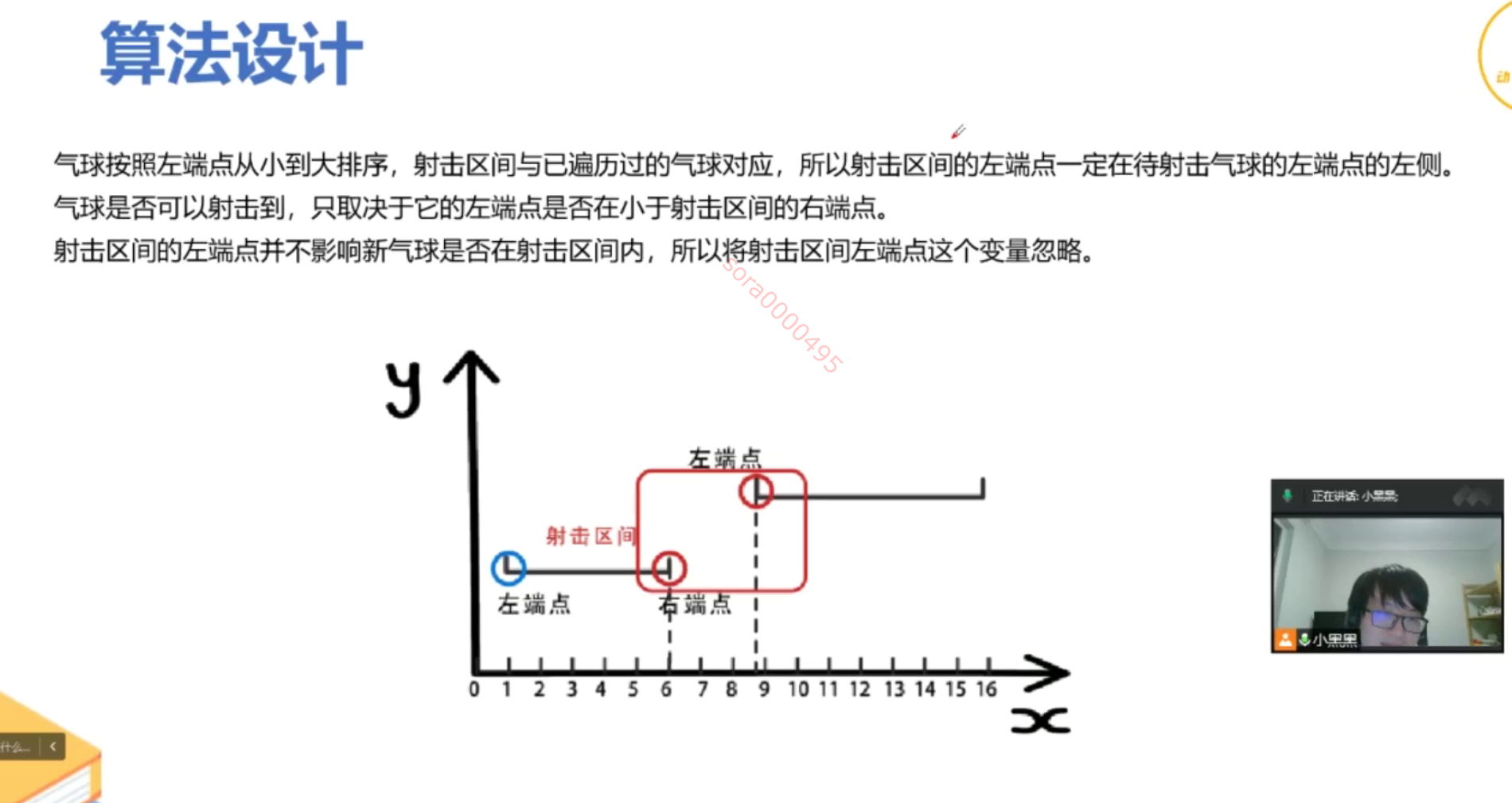
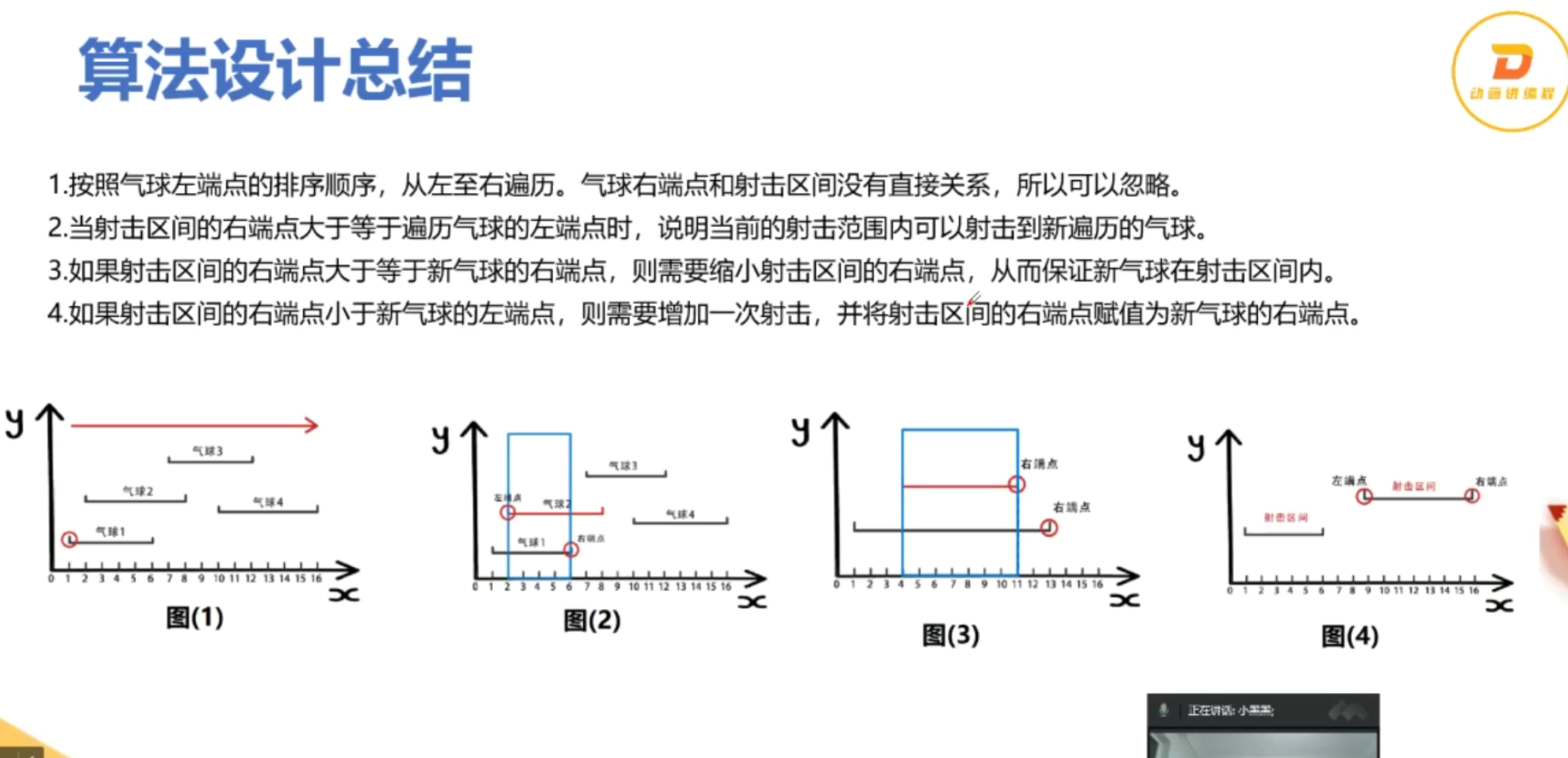
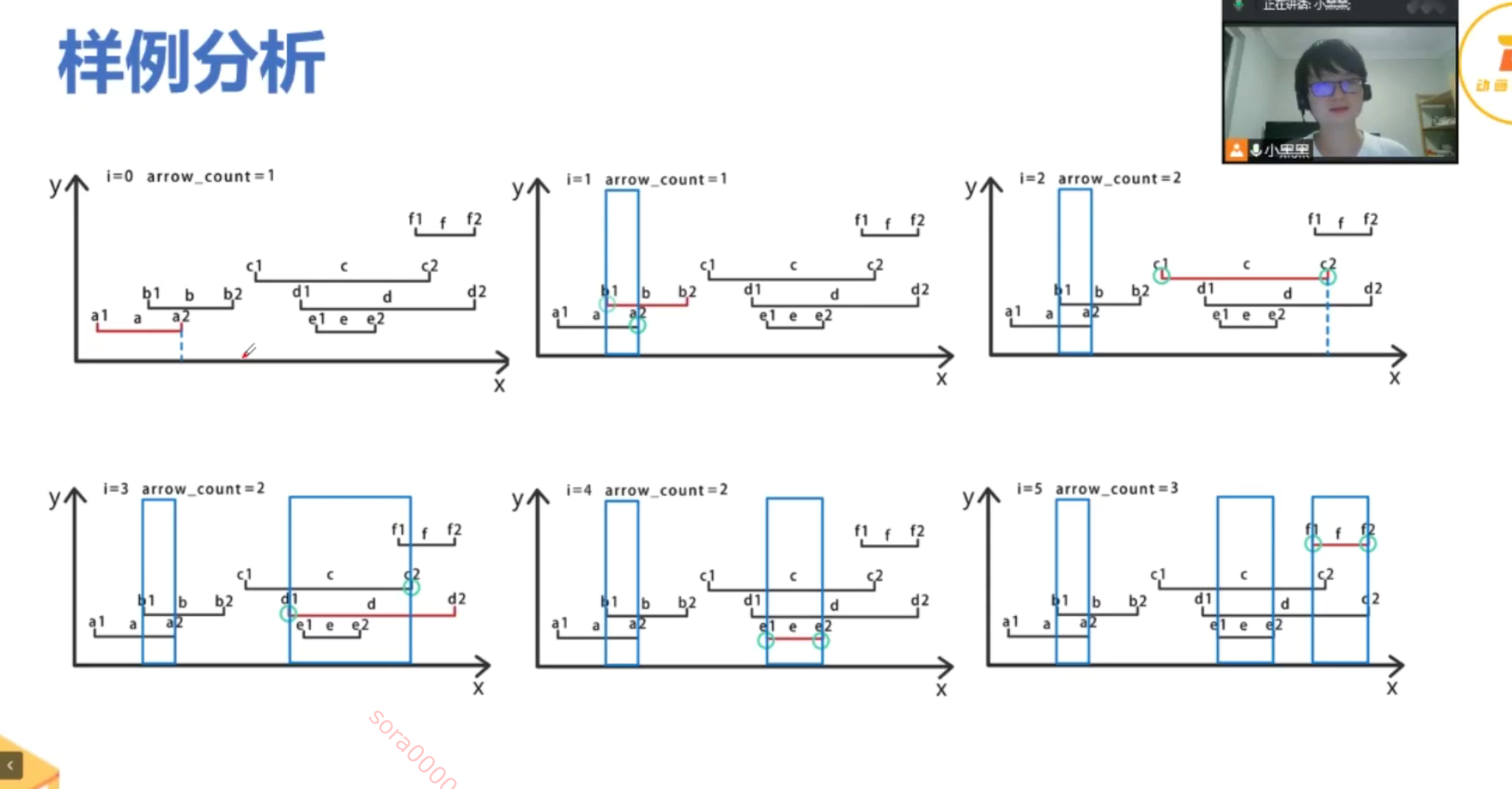
代码
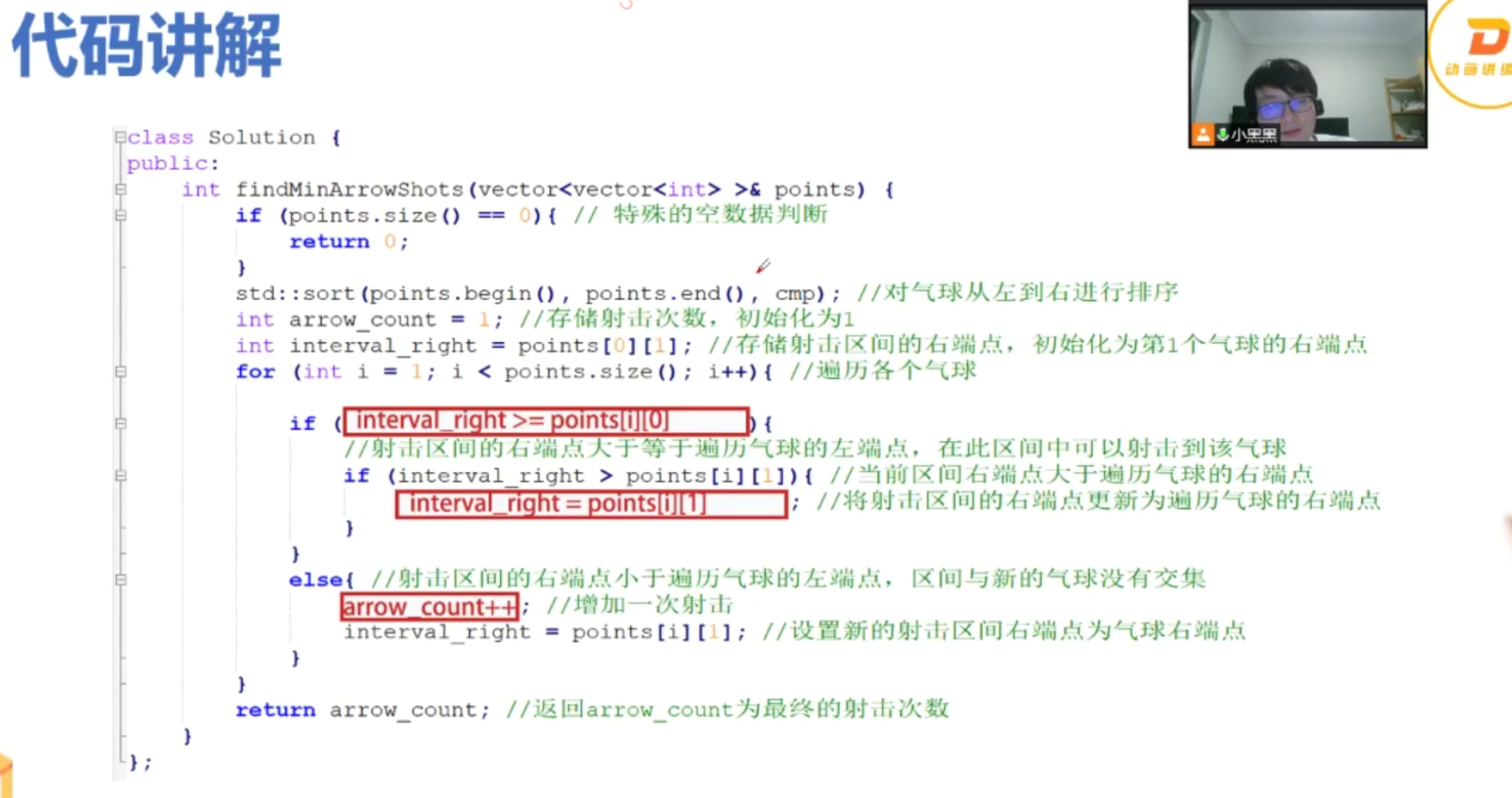
class Solution:
def findMinArrowShots(self, points: List[List[int]]) -> int:
if not points:
return 0
points.sort(key=lambda x: x[0])
arrow = 1
right = points[0][1]
for i in range(0, len(points)): # 修正了循环语法
if right >= points[i][0]: # 气球的开始时间小于等于当前箭的结束时间
if right > points[i][1]: # 更新箭的结束时间为当前气球的结束时间,如果它更小的话
right = points[i][1]
else:
arrow += 1
right = points[i][1] # 新箭的结束时间是当前气球的结束时间
return arrow力扣179 ---最大数
题目
给定一组非负整数 nums,重新排列每个数的顺序(每个数不可拆分)使之组成一个最大的整数。
注意:输出结果可能非常大,所以你需要返回一个字符串而不是整数。
示例 1:
输入:nums = [10,2] 输出:"210"示例 2:
输入:nums = [3,30,34,5,9] 输出:"9534330"提示:
- 1 <= nums.length <= 100
- 0 <= nums[i] <= 109
分析

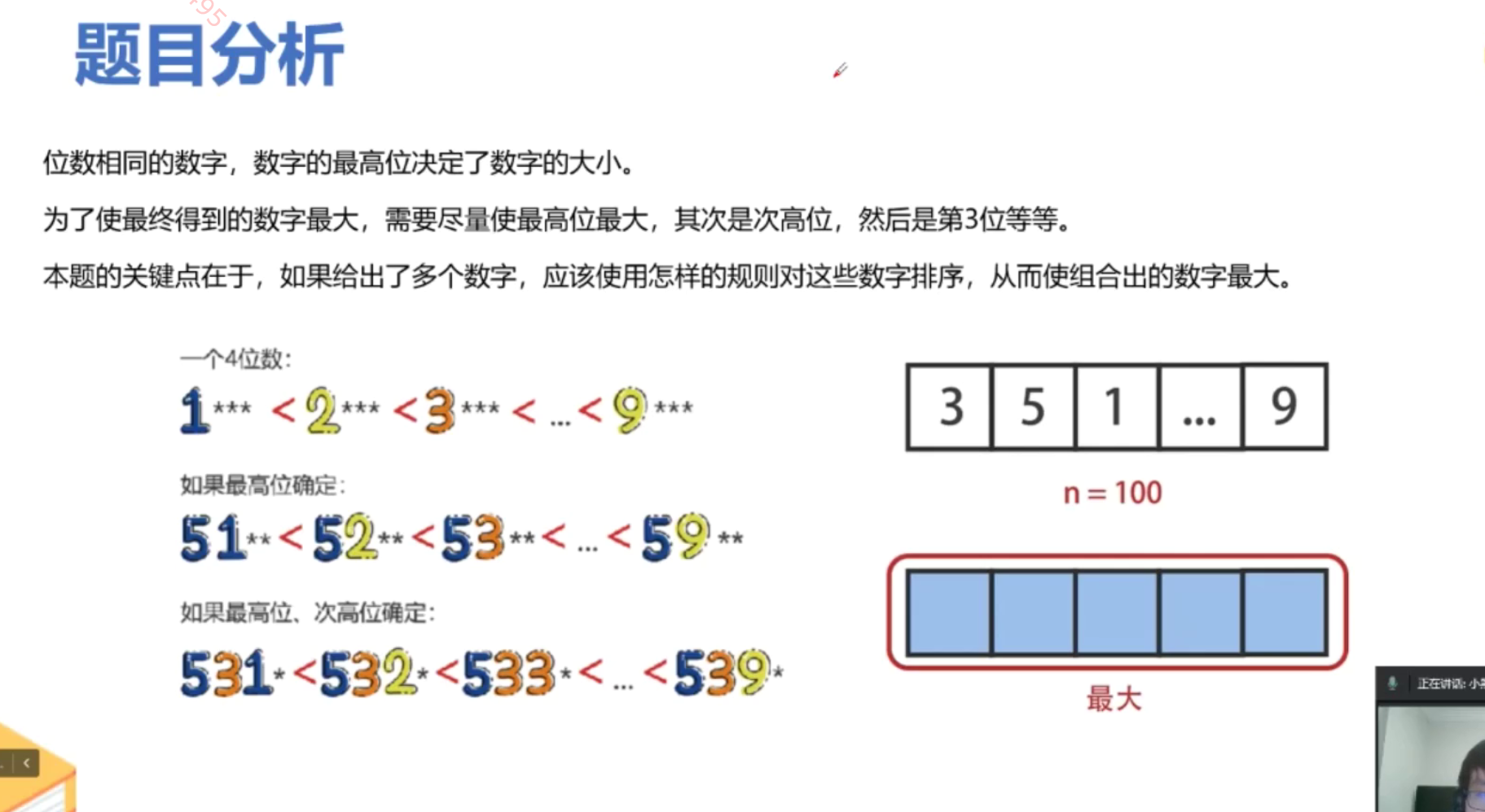
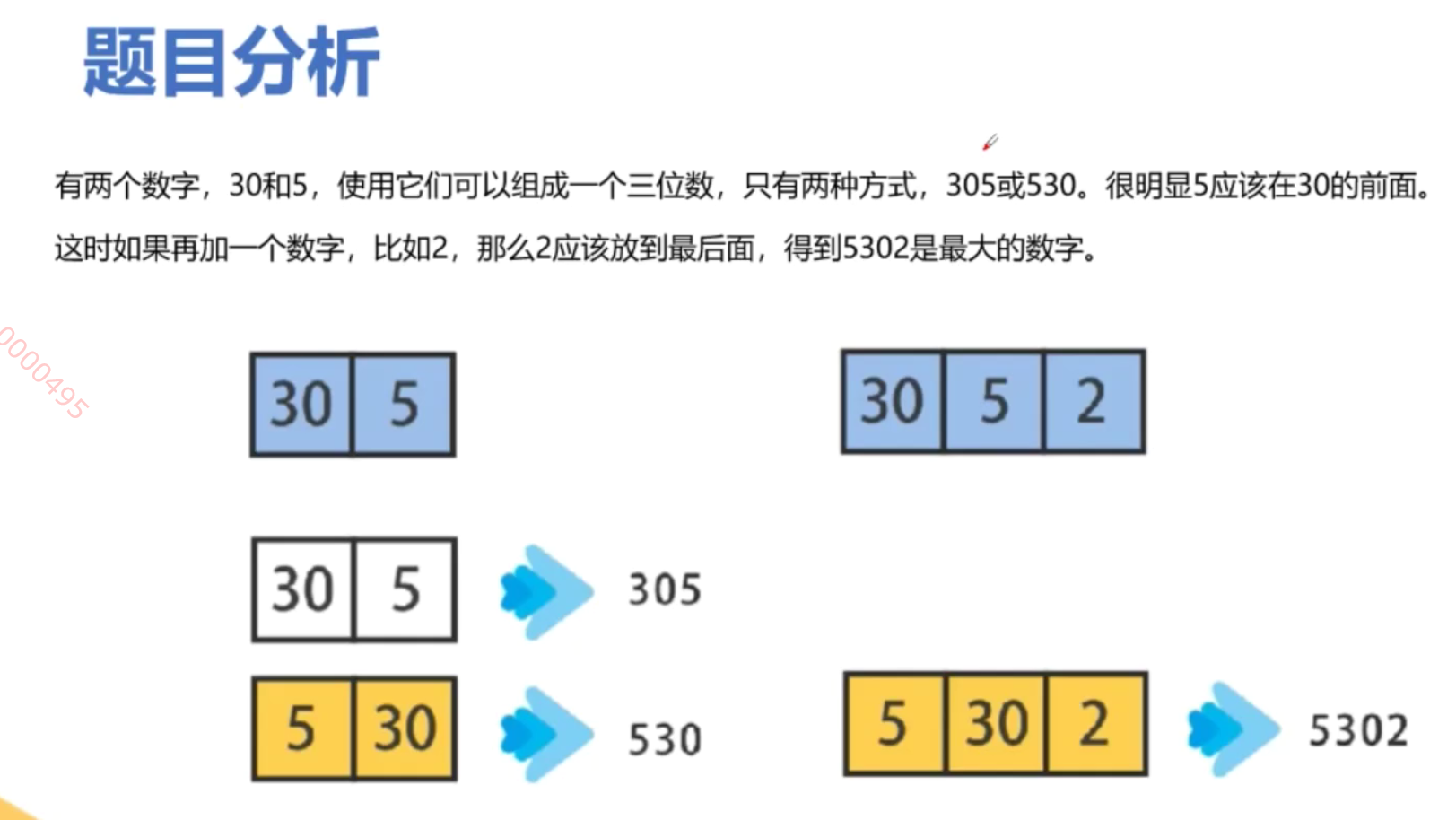
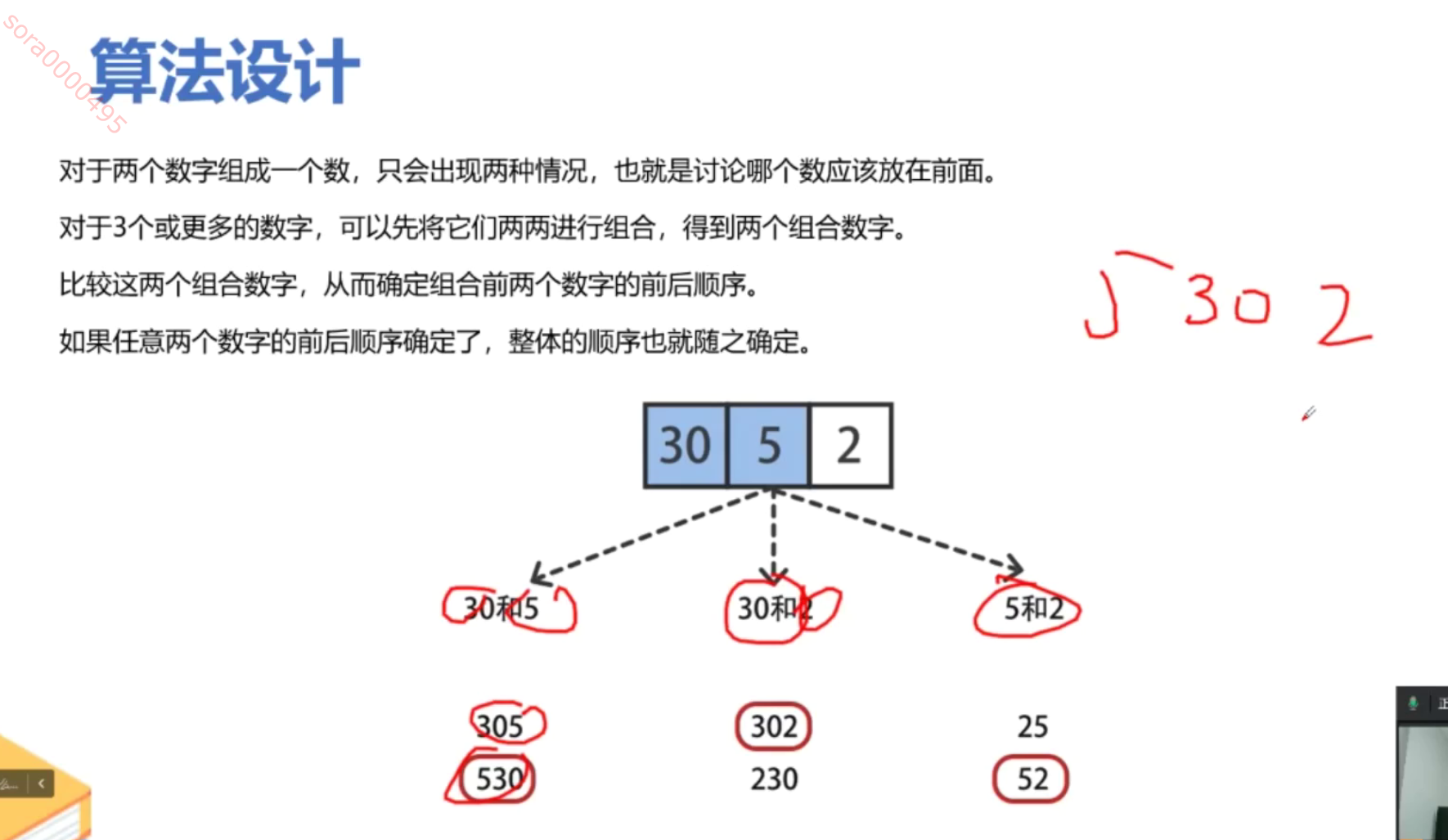
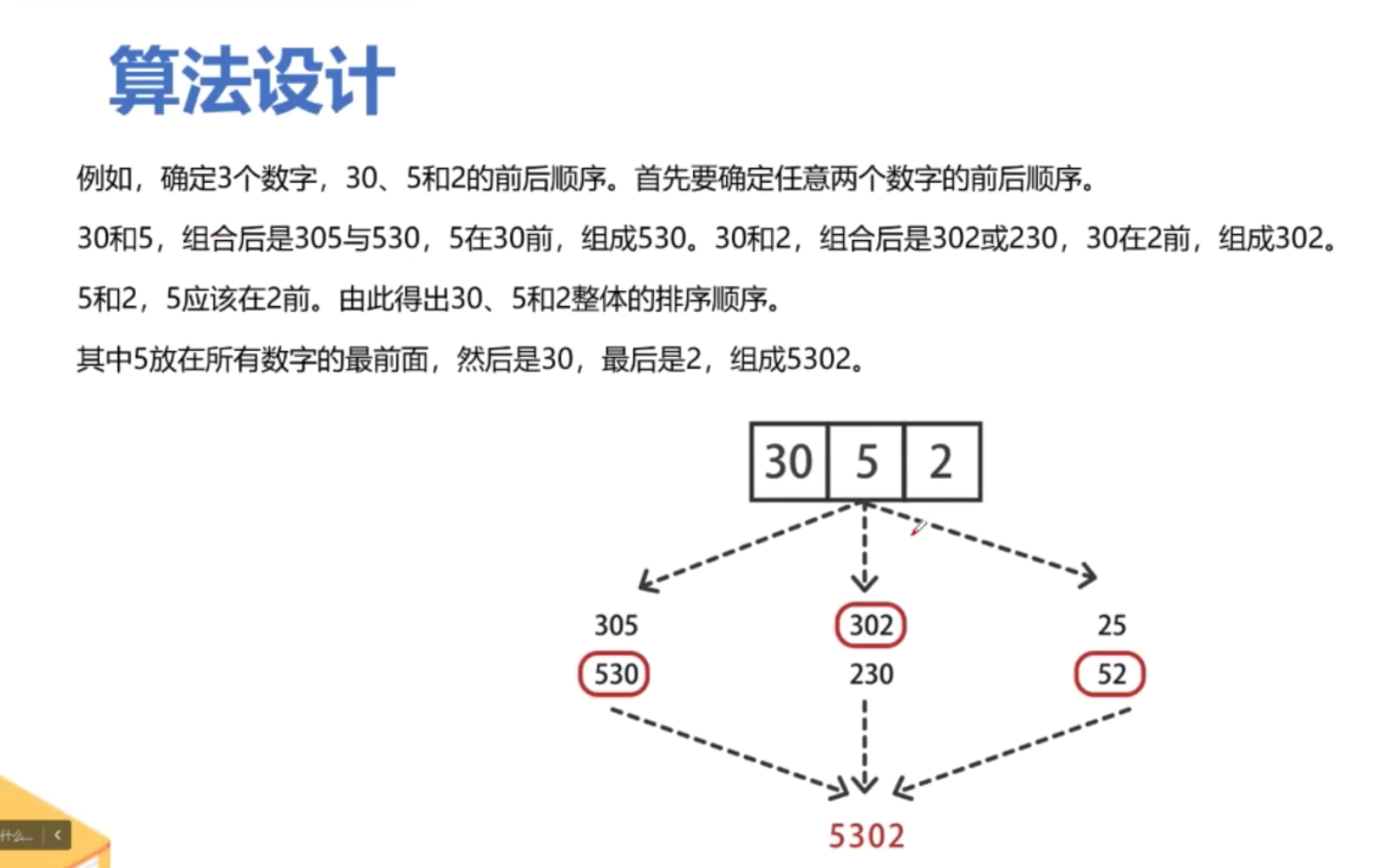

代码
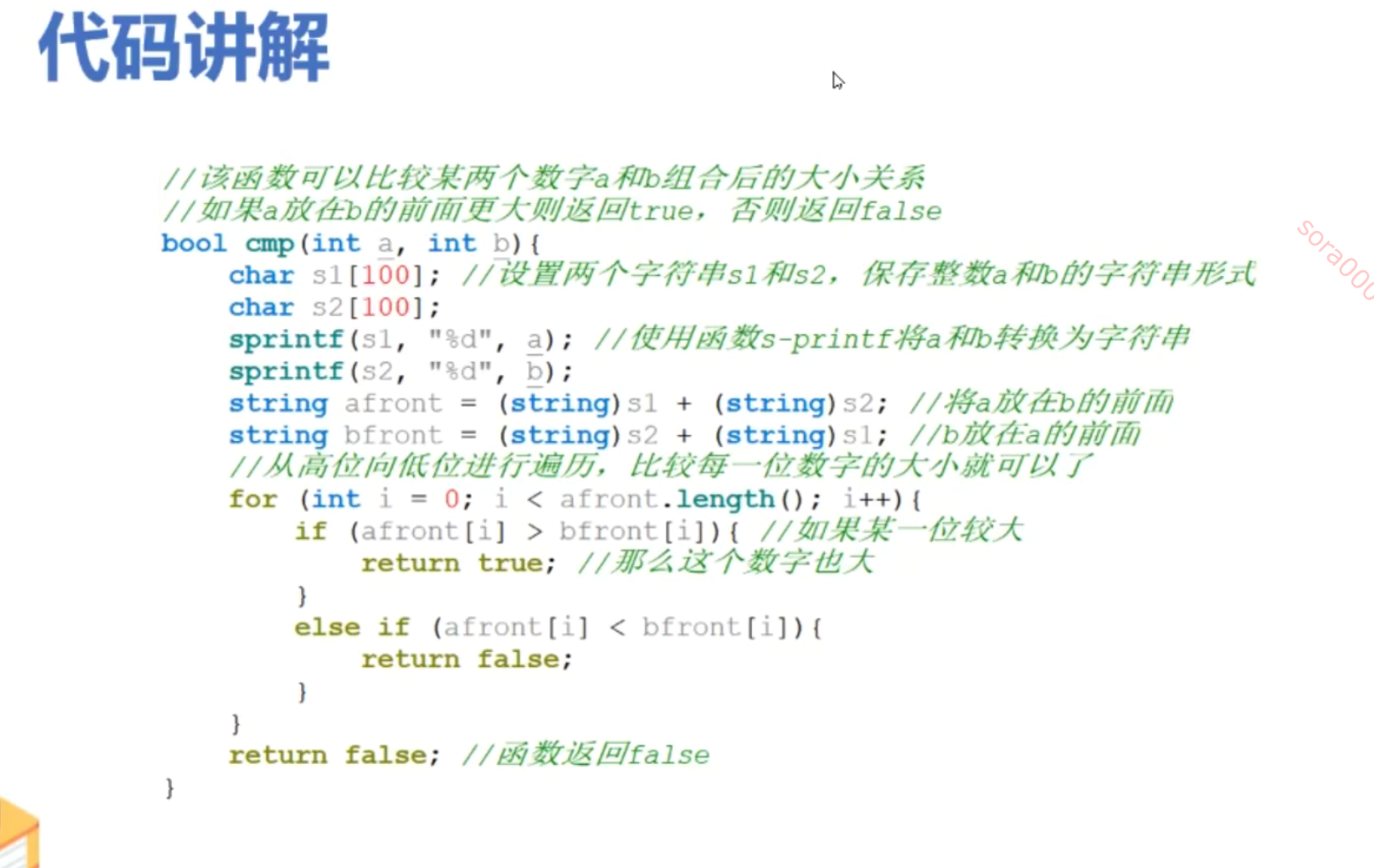
class Solution:
def largestNumber(self, nums: List[int]) -> str:
def sort_rule(x, y):
a, b = x + y, y + x
if a < b: return 1
elif a > b: return -1
else: return 0
strs = [str(num) for num in nums]
strs.sort(key = cmp_to_key(sort_rule))
if strs[0] == "0":
return "0"
return ''.join(strs)





















 958
958

 被折叠的 条评论
为什么被折叠?
被折叠的 条评论
为什么被折叠?








